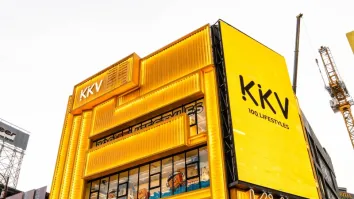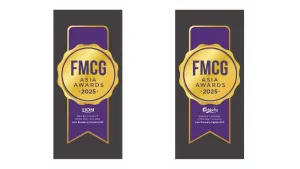
Retailers use e-labels to boost efficiency and sales
Digital price tags help improve margin through dynamic pricing.
More retailers are using electronic shelf labels, which let them update prices and promotions across stores in real time, whilst cutting costs, improving efficiency and ultimately, boosting sales.
The digital price tags could also enhance the shopping experience through QR (quick-response) codes, allowing customers to get more details such as nutrition information, customer reviews, and ads, Leona Tan, manager of consumer industries and retail at consultancy Kearney, told the Retail Asia Summit 2025 in Bangkok in February.
Tan cited French retail chain Monoprix, which installed electronic shelf labels and in-store cameras across 97 locations. The cameras capture images every 30 minutes to detect stock shortages or misarranged products, triggering alerts for store staff.
Using the tech, the company found the top 500 fastest-moving products, refilling the shelves with these, she said. On-shelf availability rose 6%, whilst revenue increased 1.2%.
“They are typically seen as an operational cost-saving tool, but they also play a strategic role in margin improvement through dynamic pricing,” Tan added.
Retailers are also using other automation technologies.
Walmart is automating more processes and adding digital touchpoints, whilst Sainsbury’s uses machine learning to optimise inventory management. Tesco, meanwhile, is expanding in-store digital screens to boost ad revenue.
The retail automation market is projected to grow 14.7% annual to $39.67b by 2030 from $20.02b this year, according to Mordor Intelligence.
Tan said shoppers now demand a consistent experience across online and offline channels, real-time stock visibility, and stable pricing.
Stores are no longer just places where shoppers buy their goods, she said. “They are also rich assets for companies to interact with their consumers, and at the same time, they also serve as logistic nodes.”
Managing an expanding product range has also become more complex, requiring greater agility in pricing and inventory decisions, Tan said. “Macroeconomic conditions make things volatile, so it’s important to be able to adjust prices and make decisions in a more agile manner.”
Illustrating how these technologies work together, Tan described a shopping experience where a customer looking for bread could use a robot assistant to locate the correct aisle. A digital screen above the shelf could showcase new product flavours, whilst a QR code provides nutritional details and customer reviews.
Meanwhile, a store associate picking online orders receives alerts on a handheld device, with an automated shelf light guiding them to each item.
A well-executed digital transformation strategy could add up to 2.5 percentage points to the operating margin, according to estimates by Kearney.
Larger stores tend to gain more from operational efficiencies, whilst fast-moving product categories benefit most from inventory management and shelf optimisation.
Retailers looking to use these technologies face several challenges.
“Companies tend to make investment decisions based on their functional or business unit silos,” Tan said. However, digital initiatives require cross-functional coordination.
For instance, electronic shelf labels can both reduce operational costs and optimise prices, requiring several departments to work together. Digital transformation should be a CEO-level priority because strong leadership is crucial, Tan said.
Beyond technology, success depends on cultural transformation. “The technology is only as good as the people who are using it,” she said. “This is beyond installing hardware in the stores.”
Employees should embrace a data-driven mindset, make real-time decisions, and continuously refine how they work. Experimentation allows them to improve instead of sticking to old methods, she added.



















 Advertise
Advertise





